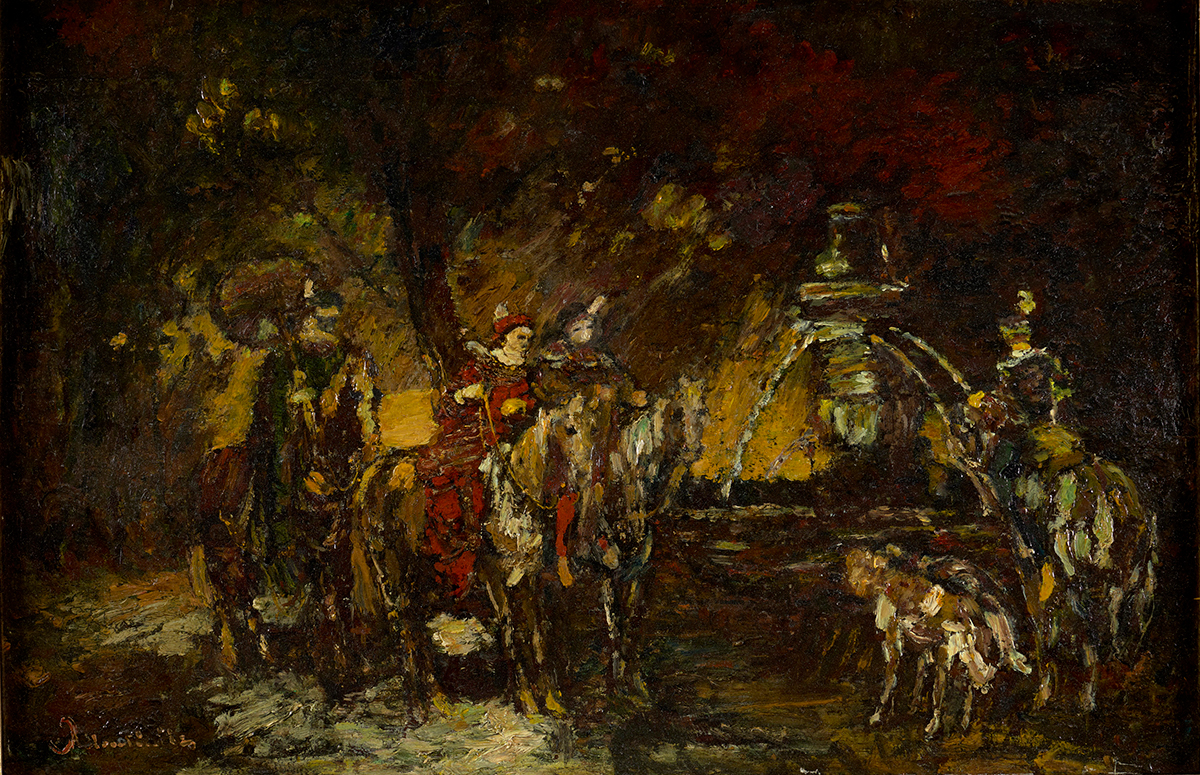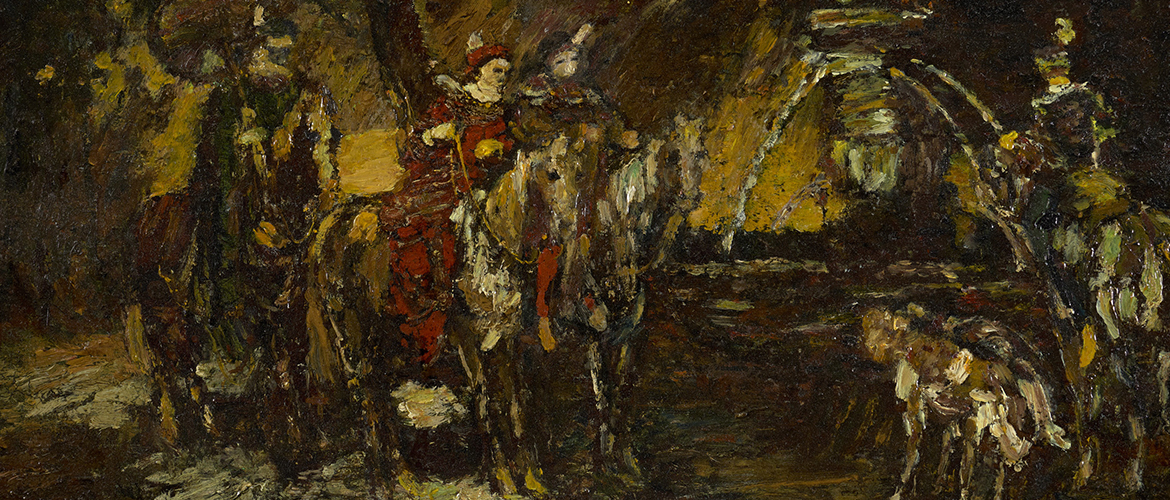Adolphe MONTICELLI (Marseille, 1824 - 1886)
La Halte des cavaliers près de la fontaine, c. 1876-1878, Oil on panel, 46 x 72 cm, MU 12688
A painter from Marseille, trained at the Marseille School of Fine Arts, Adolphe Monticelli was a prolific artist, known primarily for his genre scenes and small, lush landscapes. Following in the footsteps of Delacroix and the painters of Barbizon, his touch, both lively and impasto, profoundly renewed the way painters captured light. His role in the history of art was as modest as it was fundamental, since he played mainly the role of a ferryman, inspiring Van Gogh and, following him, the Expressionist school, and ensuring the transmission of the achievements of the Romantic revolution at the end of the century. Although they never met since Monticelli died in 1886, just after Van Gogh's arrival in France, the latter was able to admire during his stay in Paris many paintings by the Marseille painter at a dealer on the rue de Provence, Joseph Delarebeyrette, from whom, with the help of his brother Theo, also an art dealer, he was even able to acquire some.
Like a muse, Monticelli's work was for Van Gogh an essential source of inspiration, a fundamental progression in the relationship between colors. The moving letters written to his brother Theo also reveal the psychological power of this process of transmission: "I am sure that I am continuing his work, here, as if I were his son or brother, [...] taking up the same cause, continuing the same work, living the same life, dying the same death. "(The Complete Letters of Vincent Van Gogh, Greenwich, 1958, III, 446, no. W.8.). The approach of the Mediterranean light specific to the painter from Marseilles, with its vivid orange tones, even encouraged him to come and settle in Provence.
The discovery of Monticelli's painting, an essential step in Van Gogh's artistic apprenticeship, paralleled his time (October 1886) in the studio of Fernand Cormon, a teacher at Beaux-Arts de Paris, whose contribution he judged disappointing. Monticelli's influence is today much more tangible aesthetically than that of Cormon. The acquisition of this work for the collections of Beaux-Arts de Paris is thus a way of illustrating in an emblematic way the phenomenon of artistic transmission, which is at the heart of the institution's history, and of shedding light on the complexity of its methods. By its technique, its historicist subject and its role, it constitutes a form of complement to their important collection of painted sketches.

La Halte des cavaliers près de la fontaine, c. 1876-1878, Huile sur panneau, 46 x 72 cm, MU 12688



